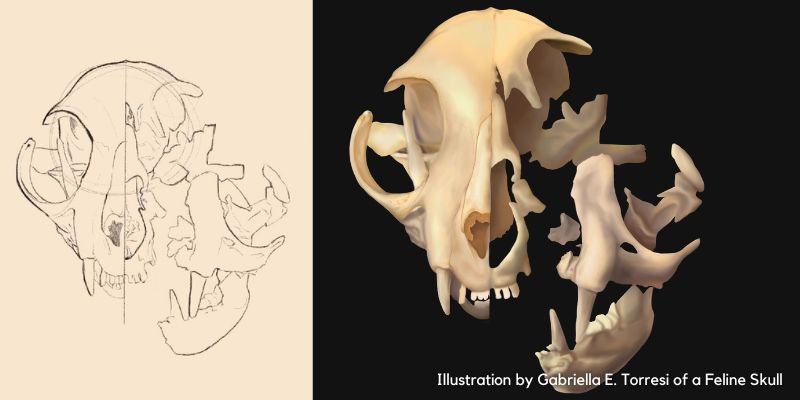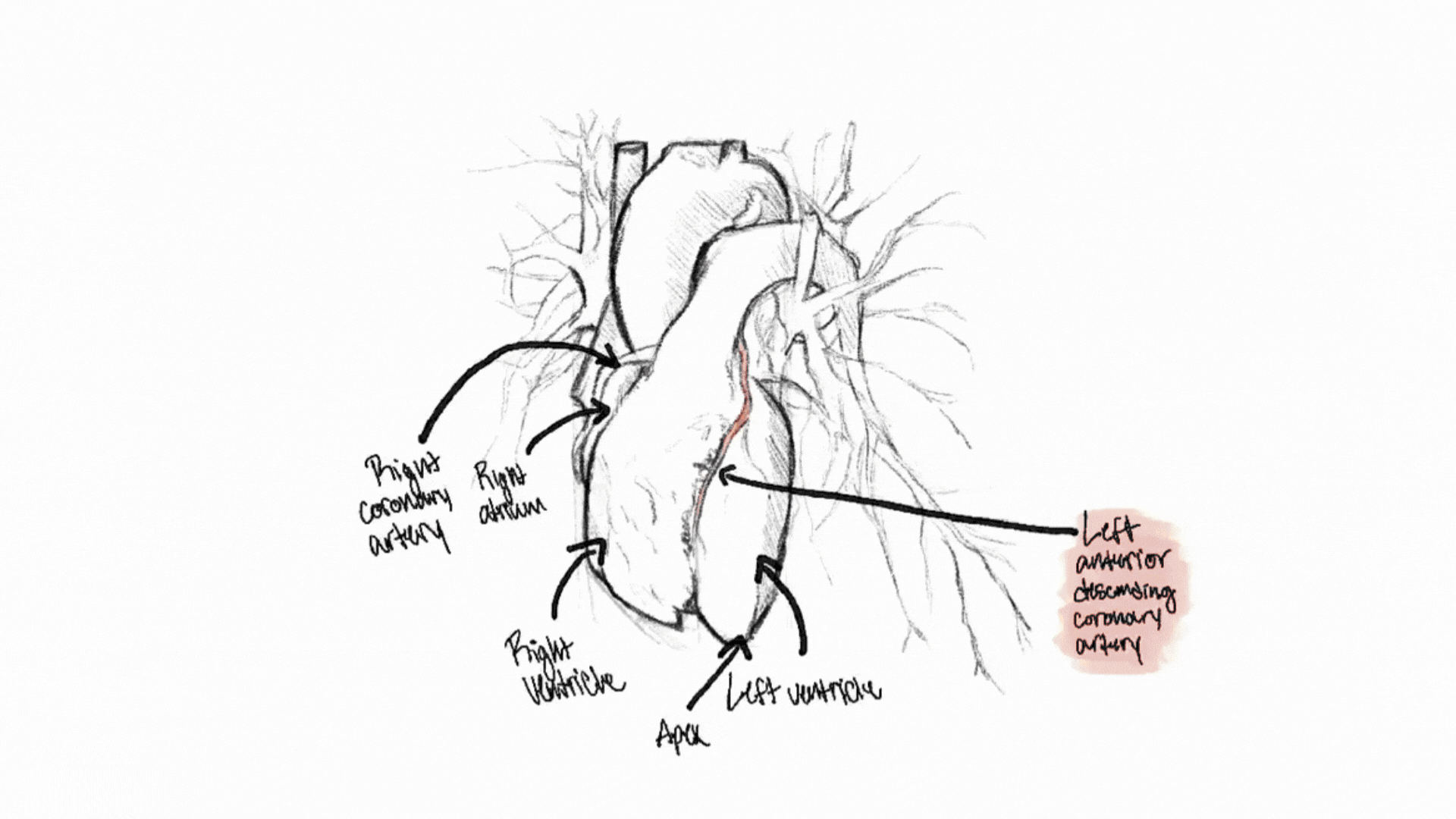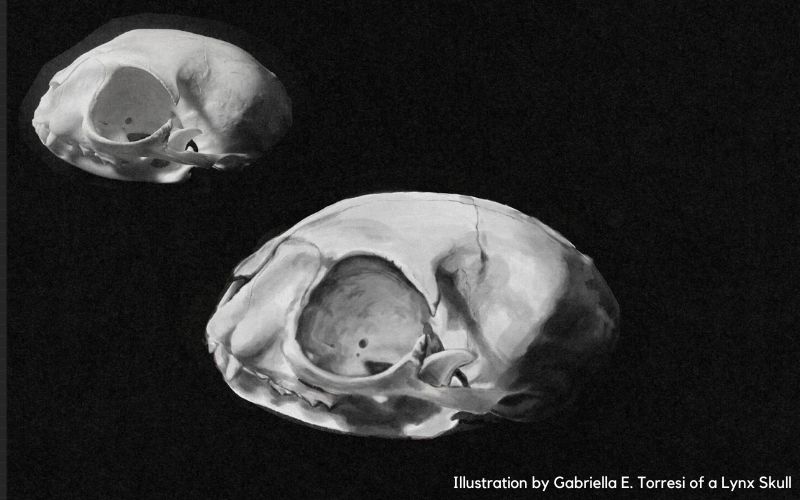Anatomy Study Tips from a Former Anatomy Student
March 30, 2023

Written by: Gabriella E. Torresi, B.A.
Hello, my name is Gabriella Torresi and I am a former anatomy student. I earned a degree in Biological Pre-Medical Illustration from Iowa State University. This degree is wonderful because I was able to combine my love for art with my interest in science, but it is not just about me. There is a common misconception that art has no place in the world of STEM, but I cannot think of a scientific field that could not use a visual helping hand from the arts. For example, have you ever been in a science class that didn’t use illustrations, 3D models, videos, posters, or diagrams to help you learn?
Scientific illustrators have the freedom to choose from a wide variety of scientific subjects - such as botany, geology, and entomology. I quickly grew passionate about anatomy through my courses at Iowa State. While studying, it felt natural for me to sketch anatomical structures and concepts while in class or while studying. I realize that sketching is not the intuitive response for many students, but hopefully these tips can help inspire you and your students, whatever your skill levels, to sketch more.

A sketch compared to the final illustration of a housecat skull.
Benefits of Sketching
There are many different benefits to sketching that are not directly related to studying human anatomy. Here are a few good reasons to consider sketching more during your academic career:
1. Improve your visual memory.
2. Improve your hand-eye coordination.
3. Encourage attention to visual detail and strengthen your observational skills.
4. Get a better understanding of three-dimensional perspective and how anatomical structures actually work and fit together.
5. Strengthen your creativity while developing a unique way of expressing yourself, your ideas, and your study habits.
More than just improving your capabilities, art is a beautiful skill that you can use alongside your scientific knowledge. Hopefully I have made sketching sound like a wonderful and productive act, because it is! (Which yes, I know I am biased…. but that doesn’t mean I’m wrong.) Now that I’m sure you are convinced to sketch, you might be asking yourself where to start….
What Makes a Sketch a Sketch?
An excellent question indeed. I wanted to take the time to make the distinction between sketching and drawing before we get into the nitty gritty of this amazing study tool. In my professional opinion, the main difference between a sketch and a drawing are their function. A drawing will usually have a specific purpose in mind while a sketch is rough, preliminary, and used mostly for planning and ideation. This is great information, but without giving you tips on how to actually sketch, it may feel pretty useless, right?
 Example of a study sketch of the human heart based off of a BodyViz Cardiac file!
Example of a study sketch of the human heart based off of a BodyViz Cardiac file!
How to Sketch
1. Supplies:
First, you will need supplies. You can be as fancy or as straightforward as you want to be here, I would personally recommend sketching directly into the notebook you use in class. Only have digital notes? It might be worth grabbing a pencil and a notebook or taking the leap into the digital art world. (I recommend Procreate if you want to start working digitally with an iPad, and Adobe Photoshop if you’re on a laptop or desktop.) Don’t worry, it won’t hurt. The main goal here is to have a sketching setup that is convenient and comfortable for you, whatever that looks like.
2. Pick a subject:
You’ll want to be really intentional about what you choose to sketch. Sketching can take a bit of time, especially if you aren’t used to it, so take a minute to think about the most helpful thing for you to sketch. Are you having a particularly hard time remembering an anatomical term? Sketch that. Are you unsure how the bones of the ankle or wrist fit together? Sketch them!
3. Start with basic shapes:
When you first start sketching, especially if this is all new for you, you’ll want to begin with basic shapes like circles, ovals, and rectangles to block out the main area and shape of your subject. Doing this will help you establish the overall proportions and positions of the subject.
4. Use reference materials:
Just like you would search for that perfect citation to include in your lab paper, look for visual references. BodyViz 3D Anatomy Dissection App is the perfect visual reference because it offers real, authentic anatomy visualizations. With BodyViz, you are able to rotate, slice, examine, and annotate real anatomy of an actual person while being able to zoom in and out of the 3D visualization to see the perfect angle and understand the full picture of anatomy. With BodyViz there is also no question of accuracy because all of our virtual dissections are real MRI or CT scans of an actual patient!
Don’t forget to take a look at your own body when you can. If you are focusing on the bones of the hand, for example, it’s a really good idea to use your own hand as reference. (Try drawing your hand externally and see if you can draw the internal structures within!)
5. Label:
I recommend labeling the anatomy on your sketch! Making sure that labels match what you see and make sense is the tricky part, but it’s also the most crucial aspect of studying anatomy with a sketch in the first place. BodyViz has virtual dissections that are already annotated to help you with this. If you get stuck with your sketch, you can always cross reference your sketch with a BodyViz virtual dissection and see a real 3D anatomy example with labels.
6. Practice:
Practicing sketching IS a part of “how to sketch,” so I wanted to make room for this topic here. Sketching IS practicing, see? The more you use sketching as a study tool, the less difficult the sketching process will become - giving you better skills and resources to help you learn.
Using Sketches to Study
The act of simply sitting down and “sketching it out” is already a great form of studying. Everything you do with your sketch is extra and will really help you solidify your understanding of anatomy. Sketches are great because they can be used in conjunction with almost any previously used study method. (I said almost any, but I actually can’t think of a study method that visuals can’t supplement.)
1. Add labels to your sketch from memory.
2. Make practice tests.
3. Sketch on flashcards to replace certain terms.
4. Try sketching the same subject again.
5. Ask a friend to add labels to your sketch and see if they notice anything off.
Of course, there are many more ways to incorporate sketching into your study routine. It will be up to you where this tool can fit in the best, and up to you whether or not you sketch at all. When in doubt, sketch it out. Good luck!

Want to learn more about BodyViz and how you can incorporate BodyViz into your curriculum? Schedule a demo today!
Schedule a Demo
Helpful Links: